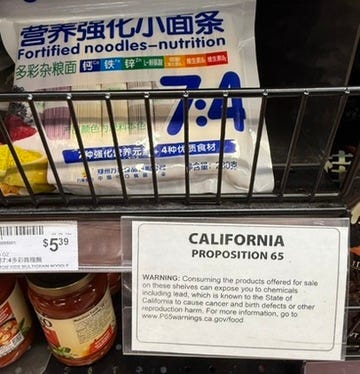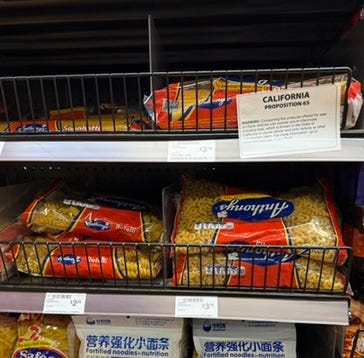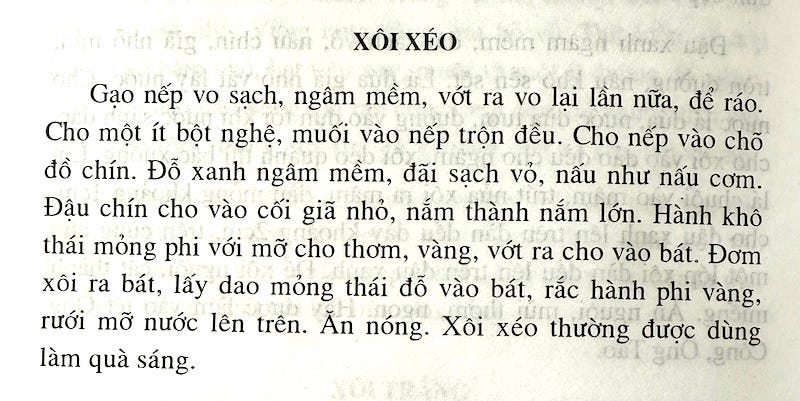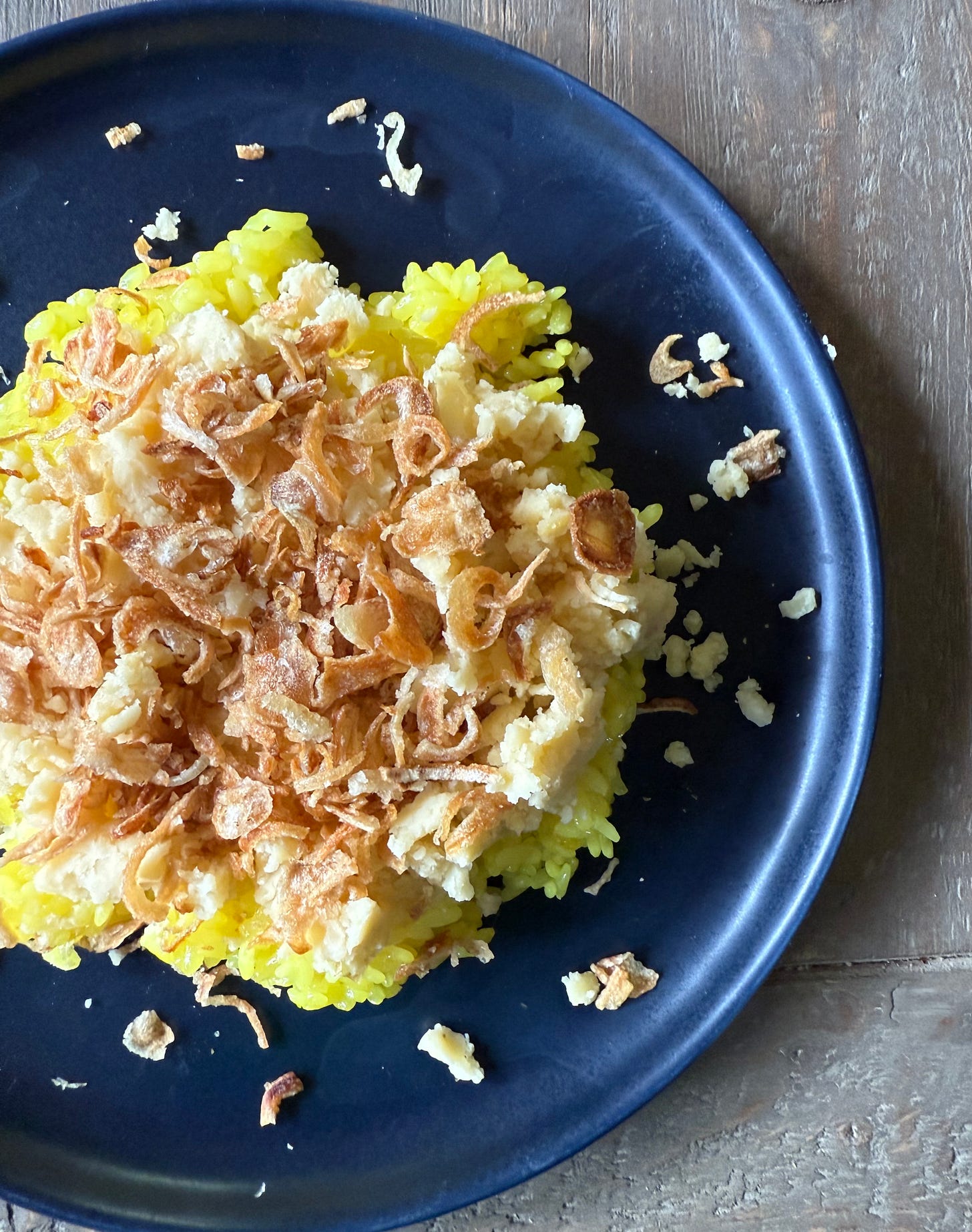Sticky Rice, Buttery Mung Beans and Fried Shallots
Xôi Xéo is sooooo easy and remarkably delicious
Hello everyone,
There have been a lot of responses to last Sunday’s dispatch on Proposition 65 warnings on food labels. What I didn’t expect was to see warning labels at a Ranch 99 in Irvine. I spotted the labels in the dried noodles aisle, which means they were applied to Asian (rice paper and egg noodles!) and non-Asian items (Anthony’s pasta!). Have you seen them too? I didn’t have time to check other aisles in the market.



Seems like overkill but manufacturers, importers, restaurants, and now a major Asian grocer are scared about private enforcers bringing them legal trouble. If you missed the Prop 65 article, get the low down on it here.
Let’s get to some Asian food fun — this week’s recipe!
The universe works in mysterious ways. Last year in response to the popular Microwave Sticky Rice recipe , Ngoc asked how that master method could be used for a Viet favorite. Ngoc wrote in a comment (I do read them all!):
Thank you so much for microwave sticky rice, from all us xôi lovers!
Now, can I get you to tell us how to make easy xôi xéo (with mung beans), the down-to-earth cousin of fancy xôi vò? That would be fabulous!
“Xôi” is the Viet term for sticky rice dishes. I have to admit something embarrassing — I was unaware of the dish Ngoc wanted. I’m a so-called expert but I don’t know everything!
I grew up with xôi vò (literally, rubbed sticky rice), which is made by rubbing and coating grains of sticky rice with ground steamed mung bean so that each grain was stained yellow. Sticky rice is naturally sticky so it’s tricky for cooks to coat the grains evenly. But the dish is one of my mom’s many specialties and I honestly took it for granted. I didn’t know that it was fanciful — a Cirque du Soleil kind of magic sticky rice trick.
I’m an intermediate xôi maker and wanted to find out about xôi xéo, which if it was as down-to-earth as Ngoc described, I could master it and so could you! Oddly, my collection of 100 or so Vietnamese-language cookbooks had very few recipes xôi xéo. There were many recipes for xôi vò (do more Viet cooks need help with it?).
Finally, in Tự Điển Món Ăn Cổ Truyền (Dictionary of Traditional Foods), I found this xôi xéo recipe:
Your Vietnamese is likely rusty. This recipe is written in Northern Vietnamese food language. It describes the dish as turmeric-tinted sticky rice topped with ground mung beans (soak and hull them before cooking!) and showered with fried shallot. My mom said (and I confirmed online) that the name xôi xéo reflects how you use a xéo (slicing, askance) motion to cut thin pieces of cooked mashed mung beans that rain down on the sticky rice.
No wonder it’s down to Earth! No rubbing needed, you just have to stain the sticky rice grains. No need to carefully cook the mung beans just right. You want a mashable bean. I was liking the sound of xôi xéo as easy traditional cooking.
Bridging Traditions in a Modern Kitchen
Yes, finding and interpreting recipes is one way that I research and develop recipes. Making them work in your and my kitchen is another thing! First, I had to make sure that’s how the dish is more or less till made in Vietnam.
My brother, Daniel, is actually vacationing in Vietnam right now! He was in Hanoi when I texted him on Whatsapp, asking if he’d spotted xôi xéo. He said, “Oh, we had that for breakfast yesterday.” He then sent this photo:

It may seem like tiny breadcrumbs to you but for me, these were all the puzzle pieces I needed to come up with a recipe. Turns out, the Hanoi specialty is utterly easy with modern ingredients and equipment in our homes.
What’s remarkable is the interplay and synergy of the three ingredients — plush rice, buttery beans, and nutty crispy shallot. Separate, they’re not super exciting. Together on a plate and in your mouth, they’re delicious.
Rory said, “Serve this to a vegan and they’ll be stunned by how the mung beans tastes fatty and rich, as if there’s lard in it but there isn’t!”
Below you’ll find:
My secret to yielding sticky rice that’s stays soft at room temperature for hours (sticky rice is notorious for hardening fast)
A mung bean explainer (because it may be unfamiliar) plus a substitute suggestion
Bonus video tips
Full text recipe plus a downloadable PDF
Thank you Ngoc for suggesting this recipe to add to our PTFS recipe archive!







